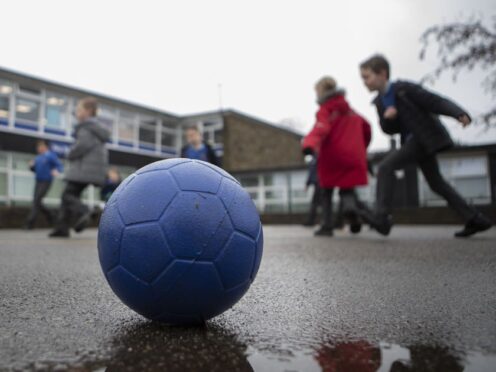Ministers have been sent a “wake-up call”, a leading think tank has argued, after figures revealed more than 250,000 children are in poverty.
Statistics released on Thursday showed 260,000 (26%) children were living in relative poverty in Scotland in 2022-23, up approximately 30,000 from the previous year after housing costs.
The Institute for Public Policy Research (IPPR) has said the figure equates to 11,000 primary school classes and warned the Scottish Government is at risk of missing legally-binding targets to reduce child poverty to 10% by 2030-31, and an 18% interim target by 2023-24.
The poverty report used a three-year average, estimating the rate of child poverty to be 24% – 240,000 – between 2020-23, but single-year statistics showed an increase, with the statutory targets in the Child Poverty (Scotland) Act 2017 also using annual figures.

Between 2020 and 2023, an estimated 21% of working-age adults were in relative poverty, up from 19% in 2016-19.
Campaigners are now urging ministers to increase the Scottish child payment to £40 per week, up from £25 currently and £26.70 from April.
Philip Whyte, director of IPPR Scotland, said: “These figures must be a wake-up call. Despite repeated statements that tackling child poverty is a Government priority, the rhetoric simply doesn’t match the reality.”
He added: “Meeting the Government’s legally-binding interim child poverty target will require 80,000 children being lifted out of poverty this year.
“We can’t give up hope for those children that the target can be met – but the evidence shows that we’re going in the wrong direction and significant action is needed, now.”
Fiona Steel, national director for Scotland at Action for Children, said: “Today’s statistics are a stark reminder we still have levels of poverty in Scotland which should have been eradicated.
“It means our nation has failed too many children and families, leaving them with no resilience or protection in their household budgets, so purchases like a broken washing machine or cooker would create impossible choices.

“To move the dial on poverty, Action for Children are calling for an increase to the Scottish child payment to £40 per week and free school meals for all primary and secondary school pupils to keep more money in families’ pockets.”
Lewis Ryder-Jones, of Oxfam Scotland, said the figures “cast a long and shameful shadow that blights lives and stamps on potential”.
Social Justice Secretary Shirley-Anne Somerville said the Scottish Government was doing “everything in our power and limited budget” to tackle poverty, adding the latest statistics “reinforce the urgency of that mission”.
She added: “Modelling published last month estimates that Scottish Government policies will keep 100,000 children out of relative poverty in 2024-25.
“Against the backdrop of UK Government austerity, the Scottish Government continues to allocate £3 billion a year to policies which will help to tackle poverty and mitigate the impact of the cost-of-living crisis on households. This includes increasing the Scottish child payment to £26.70 a week from April 1 – making the value almost £1,400 per eligible child per year.
“An estimated 40,000 children could be lifted out of poverty in Scotland immediately if the UK Government made key changes to Universal Credit. That includes abolishing the two-child limit and introducing an ‘essentials guarantee’ to ensure payments cover the cost of food, household bills and transport.”
